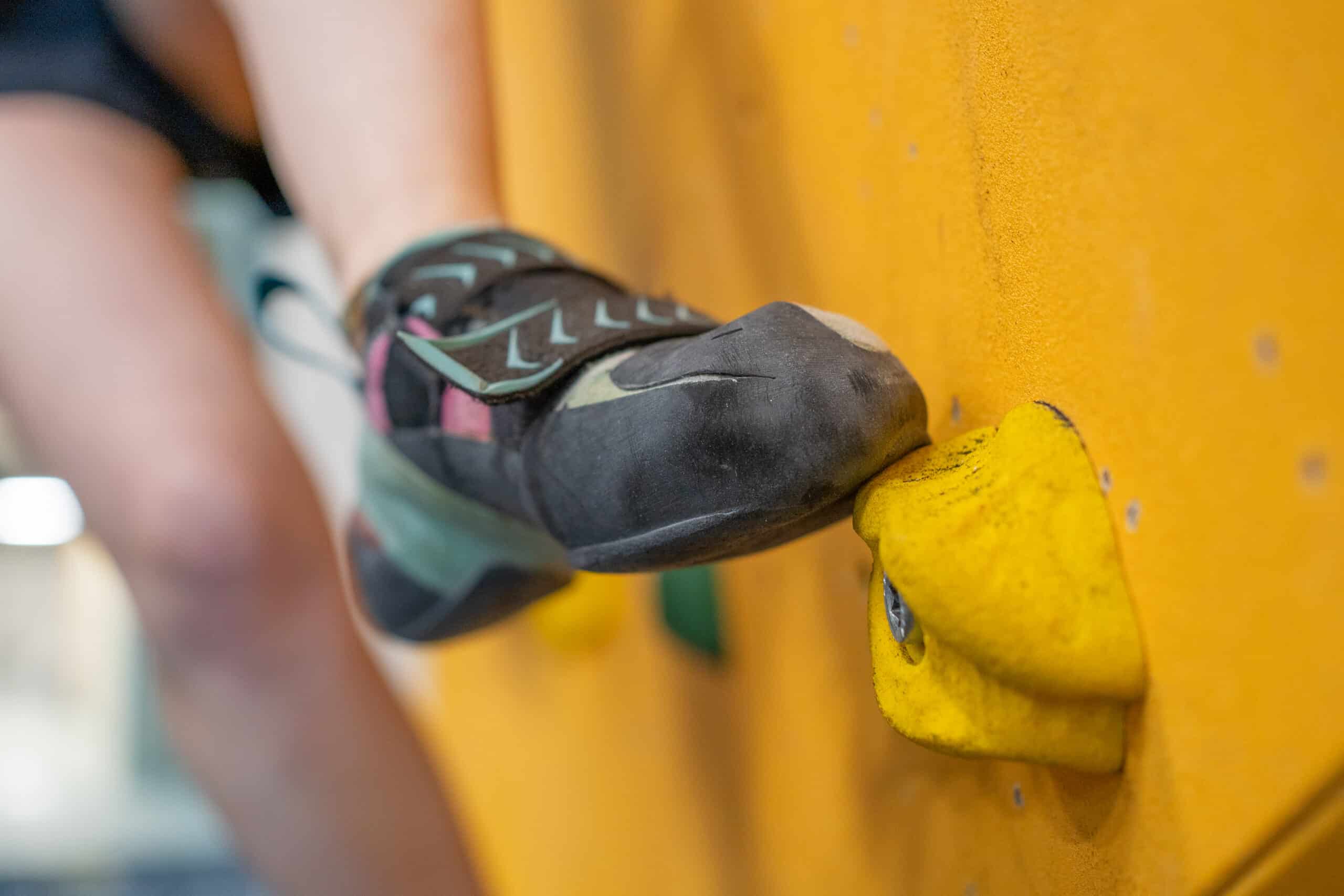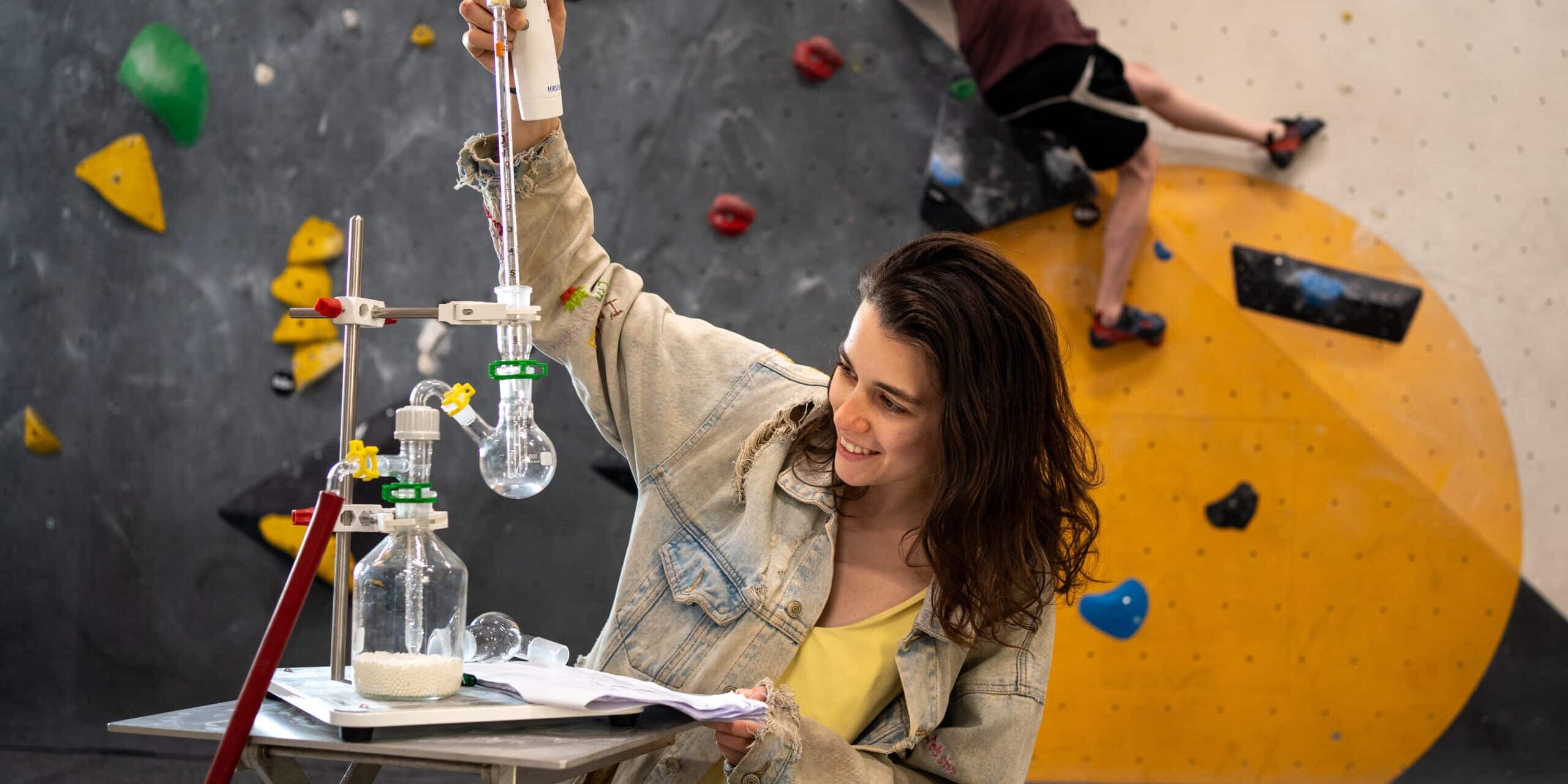High concentrations comparable to busy roads highlight the need for solutions
Those who climb indoors are doing something for their health. But climbing shoes contain chemicals of concern that can enter the lungs of climbers through the abrasion of the soles. A study conducted by researchers from the University of Vienna and EPFL Lausanne has revealed that the air in bouldering gyms contains high concentrations of potentially concerning chemicals, sometimes even higher than those found on busy streets. The findings have been published in the journal Environmental Science and Technology Air.
Discovery of Concerning Rubber Abrasion
Climbing gyms are filled with various smells, including sweat, chalk dust, and rubber. The research team, led by environmental scientist and ECH co-director Thilo Hofmann at the University of Vienna, discovered that rubber abrasion from climbing shoes can enter the lungs of climbers. These shoes contain rubber compounds similar to those used in car tires, including additives suspected of being concerning to humans and the environment.
High-Performance Rubber Compounds
Anya Sherman, the study’s first author and an environmental scientist at the Centre for Microbiology and Environmental Systems Science (CeMESS) at the University of Vienna, explains, “The soles of climbing shoes are high-performance products, just like car tires. Additives are specific chemicals that make these materials more resilient and durable; they are essential for their function.”

Collaborative Research Efforts
Sherman, who enjoys climbing herself, collaborated with Thibault Masset from EPFL Lausanne, who also researches similar topics and enjoys climbing. Together, they tested the rubber from their own climbing shoes using scientific methods typically used to analyze car tires. They collected air samples in five bouldering gyms in Vienna using an impinger, a particle-measuring device that mimics the human respiratory tract. Additional dust samples were collected from gyms in France, Spain, and Switzerland.
Unexpectedly High Air Pollution Levels
The study found that air pollution in bouldering gyms was higher than expected, with particularly high concentrations of rubber additives in areas where many people were climbing in confined spaces. Hofmann notes, “The levels we measured are among the highest ever documented worldwide, comparable to multi-lane roads in megacities.”
Identified Concerning Additives
Among the 15 rubber additives found in 30 pairs of tested shoes was 6PPD, a rubber stabilizer whose transformation product has been linked to salmon kills in rivers. While the impact on human health is still unclear, Hofmann emphasizes, “These substances do not belong in the air we breathe. It makes sense to act before we know all the details about the risks, especially with regard to sensitive groups such as children.”
Constructive Solutions for Better Air Quality
The operators of the studied bouldering gyms were cooperative and interested in improving air quality. Potential solutions include better ventilation, cleaning, avoiding peak times, and designing climbing shoes with fewer additives. Hofmann stresses the importance of switching to sole materials with fewer concerning substances, noting that manufacturers are currently not sufficiently aware of the problem.
Commitment to Healthier Climbing Environments
Anya Sherman remains motivated, stating, “I will continue to climb, and I am confident that our research will contribute to better conditions in climbing gyms.”
More information:
Original Publication:
The Invisible Footprint of Climbing Shoes: High Exposure to Rubber Additives in Indoor Facilities.
Authors: Anya Sherman, Thibault Masset, Lukas Wimmer, Leah K. Maruschka, Lea Ann Dailey, Thorsten Huffer, Florian Breider, Thilo Hofmann
https://doi.org/10.1021/acsestair.5c00017

